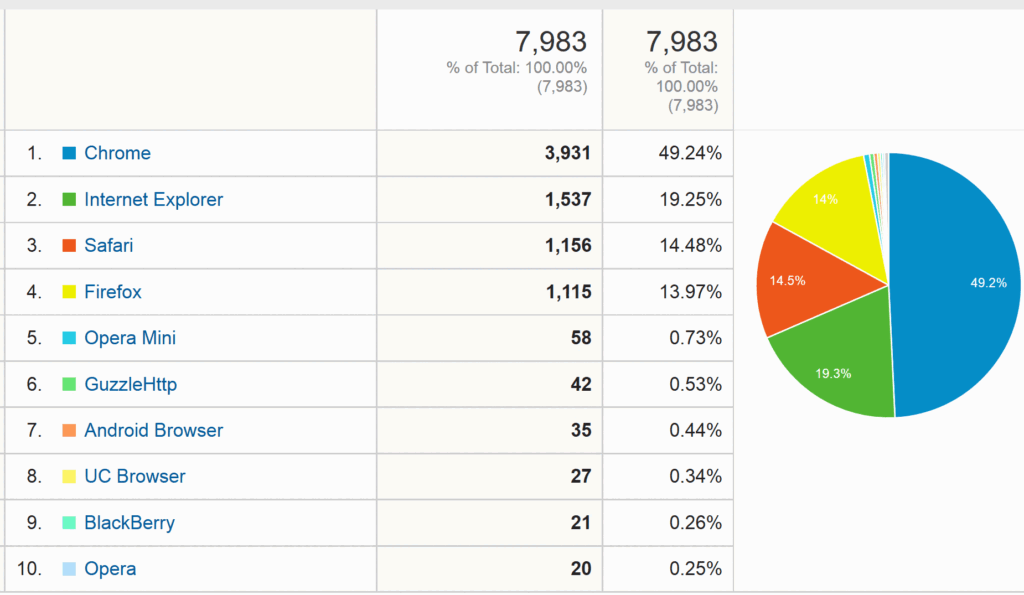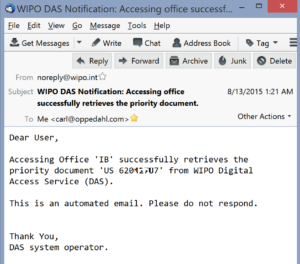October is a busy travel month for me. Here are some of my upcoming speaking engagements: Continue reading “Speaking in Toronto, Cincinnati, Cleveland and Washington in October”
USPTO can’t say it wasn’t warned about its Java applet problem
It is astonishing that even now, in August of 2015, despite many warnings and requests from users over the span of several years, USPTO has not scrapped its Java applet. By this I mean the Entrust Java applet which USPTO forces customers to use to authenticate their logins at Private PAIR and EFS-Web. The most recent reminder of all of this is USPTO’s oddly worded “Third Notice”, an email alert on August 18, 2015 from the USPTO warning customers that time is running out for users of Chrome browsers. In September of 2015 (that is, during the next month) Chrome will stop supporting Java, meaning that users of Chrome will no longer be able to log in at Private PAIR or EFS-Web.
USPTO forces customers to use to authenticate their logins at Private PAIR and EFS-Web. The most recent reminder of all of this is USPTO’s oddly worded “Third Notice”, an email alert on August 18, 2015 from the USPTO warning customers that time is running out for users of Chrome browsers. In September of 2015 (that is, during the next month) Chrome will stop supporting Java, meaning that users of Chrome will no longer be able to log in at Private PAIR or EFS-Web.
Until now I had sort of thought of Chrome as a relative newcomer among web browsers, and I had sort of assumed that most people still use Firefox and Microsoft Internet Exploder. Which got me wondering, how many USPTO customers use Chrome anyway? Continue reading “USPTO can’t say it wasn’t warned about its Java applet problem”
No outgoing correspondence from USPTO this week?
Over on the patent practitioner’s listserv, alert listserv member Judith Szepesi asked:
I usually get 1-2 things via eOffice Action every day. I haven’t gotten any emails in the last week. Not a single one. Logging in, the last item on PAIR Outgoing Correspondence has a mail room date of August 11, 2015. I don’t think I have had a break this long since I set up the eOffice Action emails. Is it just me?
Continue reading “No outgoing correspondence from USPTO this week?”
What it costs to get a US application on the Patent Prosecution Highway?
Previously I blogged about what it might cost to get a US application examined fast on Track I and by Accelerated Examination and by an old-fashioned Petition to Make Special and under Rule 496. Now let’s talk a bit about what it might cost to get a US application examined fast on the Patent Prosecution Highway. Continue reading “What it costs to get a US application on the Patent Prosecution Highway?”
What it costs to get a US application “advanced out of turn” under Rule 496?
Recently I blogged about what it might cost to get a US patent fast using Track I or Accelerated Examination or due to age or health of inventor. Here is another blog posting, this one about getting a US patent fast using Rule 496.
Some practitioners know about 37 CFR 1.496 (“Rule 496”). Rule 496 details a situation in which a US patent application that is the national phase of a PCT application will be “advanced out of turn for examination.” What should a practitioner charge for getting a case “advanced out of turn” under Rule 496? Continue reading “What it costs to get a US application “advanced out of turn” under Rule 496?”
Nice feature in WIPO’s DAS system – notifications
Yesterday for the first time I encountered a particularly nice feature in WIPO’s Digital Access Service (DAS). The feature has been there for some time but yesterday was the first time I actually saw it work. The feature is that you can set up a sort of “tripwire” and when some Office retrieves a certified copy of one of your priority applications from DAS, you will receive an email message letting you know that this happened. Yesterday for the first time I received such an email.
in WIPO’s Digital Access Service (DAS). The feature has been there for some time but yesterday was the first time I actually saw it work. The feature is that you can set up a sort of “tripwire” and when some Office retrieves a certified copy of one of your priority applications from DAS, you will receive an email message letting you know that this happened. Yesterday for the first time I received such an email.
Continue reading “Nice feature in WIPO’s DAS system – notifications”
Nice feature in ePCT – fee payments
There’s a nice new feature in ePCT. It used to be that if you were to file a new PCT application in RO/IB, and if you were to say that you plan to pay by means of a credit card, that what would happen is later (some days later) you would receive an email message with a link to a web page inviting you to pay the fees.
Now the ePCT system takes care of everything all at once. When you click “submit” to e-file the PCT application, and when you say you would like to pay the fee by credit card, then a new screen appears that permits you to type in the credit card number and other information. You can finish the e-filing session with the knowledge that you have indeed taken care of the fee payment.
This is good for several reasons.
First, it saves you having to docket to check for the arrival of the several-days-later email to pay the fee. (We estimate that every time we have to set and clear a docket, we incur an internal cost of something like $50.)
Second, it gets the fees into the RO’s hands sooner. Which means that the search fee gets into the hands of the ISA sooner. Which means the International Search Report and Written Opinion arrive sooner.
Extent to which metadata in PDF Documents filed in EFS-Web can be seen later?
There’s a discussion over in the EFS-Web listserv (the listserv for patent practitioners) about the best way to create a PDF so that it won’t unnecessarily reveal metadata. The answer for Windows users is of course to use CutePDF to create the PDF. Which then led to the question of the extent to which USPTO strips out metadata in which case maybe the filer can be lax about this. What is the answer? Continue reading “Extent to which metadata in PDF Documents filed in EFS-Web can be seen later?”
What it costs to get a US patent fast by making it “special” (age or health of inventor)?
When I was first in practice, there were a dozen ways to get a US patent application made “special”. Just to give a few examples, you could explain that a would-be investor needs to know whether a particular invention is patentable before constructing a factory. You could explain that you have found someone who infringes a claim of a patent application. You could point out that your subject matter would promote national security or fight terrorism or benefit the environment. You could establish that one of the inventors is in such poor health that the inventor might not live long enough to assist in the prosecution of the application. You could establish that one of the inventors is 65 years of age or older.
A few years ago the USPTO decided to pare down the list of ways to get a patent application made “special”. The list of ways is now very short. In this blog post I will talk about two of the remaining ways, namely:
- special based upon age of the inventor, and
- special based upon poor health of the inventor.
What might the practitioner charge for making a case special on either of these grounds?
Korean PCT search fee to drop on October 1
The fee for a US PCT filer to choose the Korean Intellectual Property Office (KIPO) as an International Searching Authority (ISA) is presently $1219. On October 1, 2015 it will drop to $1125. Continue reading “Korean PCT search fee to drop on October 1”
